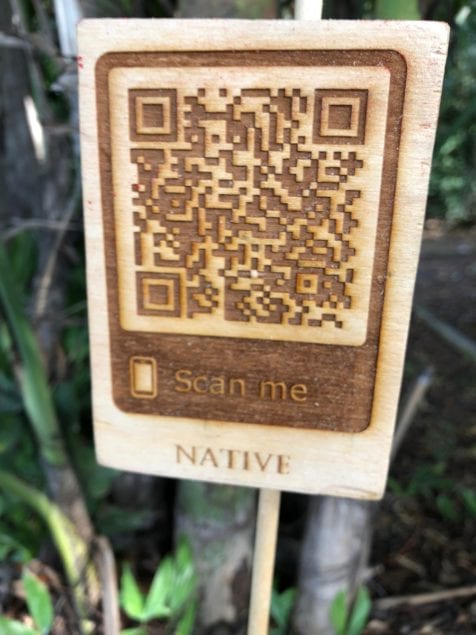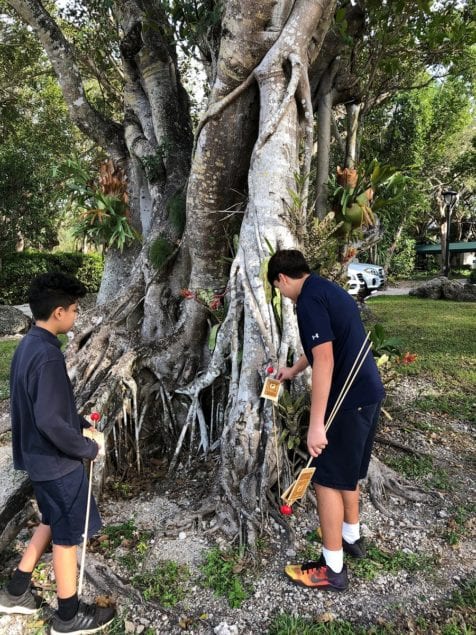Palmer Trinity School (PTS) students recently completed a tree identification program that uses Quick Response (QR) codes to help educate the community and PTS visitors on the foliage found on campus.
Palmer Trinity educators worked alongside Fairchild Tropical Botanic Garden biologists to identify and record all the tree species within the school’s 60-acre campus. The trees of Palmer Trinity, which number more than 1,000, are comprised of 76 species.
More than one half of the tree species are native to South Florida; the remaining species hail from tropical climates around the world.
Robert Moore, science department co-chair and science teacher, and middle school students tagged one tree from each of the 76 species on campus. Each unique QR code tag provides information on the tree species including its common name, scientific name, family, origin, and a brief description. The QR codes have been laser-cut in birchwood and are displayed along-side trees and plants.
Students and visitors can obtain this information by scanning the QR codes with their smartphone camera and scanning apps or similar QR code readers.
“The QR codes make accessibility to accurate information on local flora easier for our students and help spark interest in the importance of each species and its role in our ecosystem,” said Dr. Leopoldo Llinas, director of Environmental Stewardship and science teacher.
The QR code project was born from wanting to make the results of Dr. Llinas’ initial tree identification project accessible to the entire community. The QR codes provide a direct link to the online information enabling visitors to explore the school’s campus and identify its exceptional multitude of trees.
“Such learning spaces impart a feeling of the campus culture to students. The culture they sense meshes a respect for nature with their technology habits. These trees enhance the lives of Palmer Trinity’s students, staff, faculty, and neighbors, while providing an important habitat for native fauna such as green anoles, gray foxes, and a multitude of migratory birds,” Dr. Llinas added.








